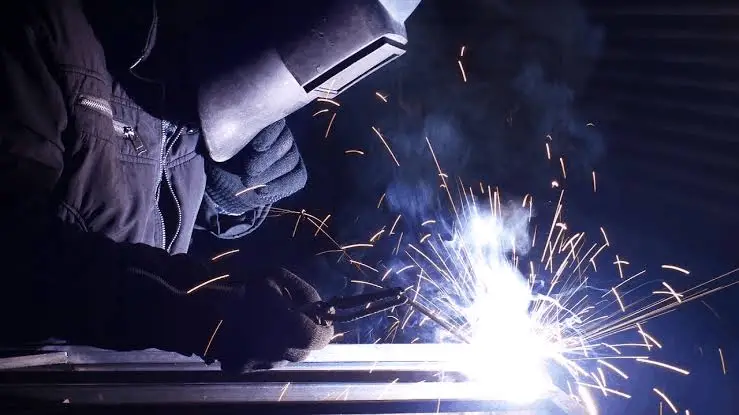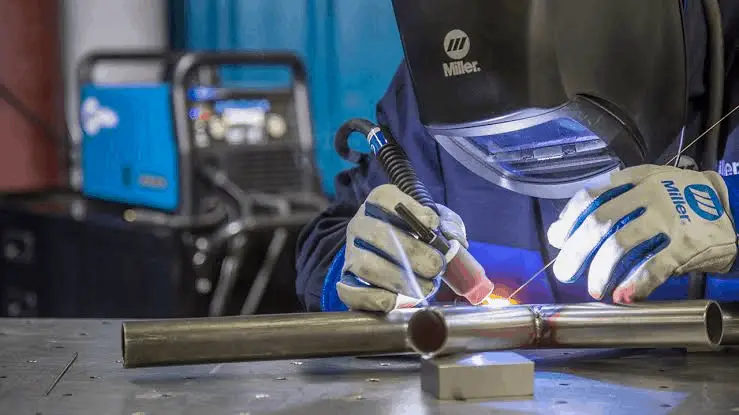If you work in an auto shop then you have probably encountered situations where you need to do some welding on car parts. To start with you can get someone who is really good in the technique and let them train you. Some of the welding techniques like MIG are pretty straightforward with the shortest learning curve.
If you understand the basics of welding then it will help choose the right type of welding technique. Before you can start on any welding procedures ensure you have the right safety equipment. The kind of temperatures that most wielders use can be dangerous without gloves and protective jackets. Get something for your eyes as well.
Metal Inert Gas Welding (MIG)
This welding technique produces a very precise weld as it uses inert gases like argon and carbon dioxide to create an optimum welding environment. The process is simple making it ideal for beginners. You also get a very clean weld that is devoid of splutter.
During MIG welding, you are continuously adding metal filler. However, this is been fed from the wielder gun when you pull the trigger. The gases used differ with carbon dioxide/argon been the most common for welding straight steel while helium is added to the other gases when welding stainless steel. The purpose of the gases is to act as a shield for the metallic parts been welded hence prevent oxidation.
MIG uses a consumable electrode to join metallic parts. This electrode conducts electricity and supplies it to the weld joint. When exposed to the weld pool the electrode will melt. You can use MIG in an automotive shop for welding dissimilar metals.
MIG wielders can be configured to enable them use a flux core wire. Unlike a stick welding rod where the flux is on the outside, with this flux core wire it is on the inside and the thin metal is wrapped upon it. The purpose for this is as the flux inside the wire melts it helps create a gas shield; this enables one to operate the MIG wielder without necessarily using gas. The benefit of this flux core MIG welding is you can operate at higher temperatures hence enabling to work through rusty metals. These are quite common in automotive shops with old cars. The downside is that it is not such a clean way of welding as it leaves flux powder.
To enhance the efficiency of your welds ensure that you properly clean the surfaces off dirt and rust. Also, ensure you properly regulate the flow of the shielding gases. MIG due to its efficiency, affordability and short learning curve has become one the most preferred welding technique for automotive shops.
Pros
- Easy learning curve
- Produces high quality welds
- Suitable for dissimilar metals
- Minimum weld splatter
Cons
- Not suitable for outdoor welding especially in areas with strong winds
- Not suitable for thick metals
Arc welding

The main component for arc welding is the electrode or what other people call stick. To join the metals together an electric arc is melted by passing an electric current through it. The electrode is often powdered with flux. To prevent any chances of oxidation the inside of the rod contains metal filler while the outside is covered in flux.
The electric arc is known to rise to temperatures of over 3500˚C. The problem with arc welding is it leaves powder from flux, which you will need to clean off. In an automotive shop, you can use arc welding for heavy metals as the weld can penetrate various rusty materials. Arc welding is vital when you are doing welding for old rusty cars that you plan to restore.
To enhance the efficiency of arc welding you will need to know the types of materials used in the construction of the welding rods. Some rods have better penetrative abilities than others do, so you have to choose wisely. Arc welding can be complicated. For one, you need an extra pair of hands during the process – one for adding the filler rod and another for operating the wielder. There are various types of arc welding like flux-cored arc welding Shielded metal arc welding, submerged arc welding and Plasma arc welding.
Pros
- Wielder is portable
- Ideal for high speed welds
- Works on both DC and AC
- Operates at high temperatures making it able to penetrate rusty materials
Cons
- Requires two pairs of hands to operate
- Not suitable for reactive metals like Ti and AI or for welding thin metals
TIG welding

Tungsten Inert gas welding technique uses inert gases like argon as a shield and a tungsten rod that is attached to the end of the welding torch. The rod will create an electric arc that melts the metallic parts together but the tungsten rod itself does not melt. The benefit is you do not need to add any materials during the welding process making it a technique that loved by welders. The tungsten rod is also referred to as non-consumable electrode as it is not melted during the welding process.
Since with TIG welding you do not need slag or flux the technique produces very clean welds. You can use it to join together two metals that are press fit without need for any joining materials. If you do need to fill in the gaps you can always use some filler rods. Due to its super clean welds it is an ideal welding technique for motorcycle repairs and those into custom car builds. You can use the welding technique for various non-ferrous metals like copper, aluminum, nickel, magnesium, and titanium. For motorcycle repairs you can use it for some exotic metal repairs.
Pros
- Produces a clean weld with no carbon residue
- The welder has a high degree of control during welding
- Produces strong welds
- Can be used with a variety of exotic metals
Cons
- Suitable for experienced welders
- Not suitable for thicker metals
Flux core welding is what you need if you are doing welding on rusty metals. It can operate on a higher temperature than MIG hence enabling you to drive you through the rust. TIG would be ideal for automotive shops that deal in a lot of second hand cars. However, it is not that clean. You can use TIG when welding outside unlike the MIG where the inert gas will be blown away.
MIG is the easiest to learn. In fact, experienced welders claim to be able to teach a novice how to weld in less than 20 hours. It is also the most cost effective but may not be suitable for rusty metal. You can also use MIG for dissimilar or imperfect metals.
When it comes to welding then having the right inert gas is critical. The main purpose of shielding gas is to protect your weld from forming carbon monoxide due to the mixture of carbon in the weld and outside gases. If you put on too much pressure during welding then your shielding gas will keep running out. The most appropriate gasses to use is argon and carbon dioxide mixture at a rate of 75% to 25%. You can also use 100% carbon dioxide but for a deeper penetration but this only increases your rate of spatter.
Remember you can always convert your MIG weld to flux core if need be. You will need to find the right balance between wire and heat speed. This gives your weld better penetration. Finding the right balance is something your perfect with continued practice. Instead of learning MIG and TIG, just go for MIG welding for automotive purposes.
Finding the right MIG wire is also very critical in getting the right weld. The spool arc normally contains elements that combine with oxygen and instead of forming carbon monoxide it forms some harmless slag. Most of the MIG wires in the market use manganese and silicon as the deoxidizers. However, if you are searching for stronger wells go for wires with titanium, zirconium, or aluminum deoxidizers.
During welding ensure you put your safety first. This means putting on the right protective clothing and ensuring your working area is free from any inflammable materials. Automotive tend to have explosive gasoline and other inflammable fluids. Before you decide to work on such a car ensure you have drained the car off these fluids. The wire selection for your MIG wire will depend on diameter. The most commonly used wire is the ER70S-3. If you want something that will cut through rusty metal then go with the ER70S-6. This tend to have higher deoxidizer content than other wires. The 0.030-inch wire is the most commonly used for automotive repairs.
Conclusion
If you are planning to do some welding in your automotive shop then go with MIG welding. This welding technique is simple to learn, produces less spatter and you have cleaner joints. However, if you thinking of working on rusty metal then go with TIG welding, this has the ability to contact higher heat rates while offering deeper penetration. The downside is it produces more spatter than MIG.
